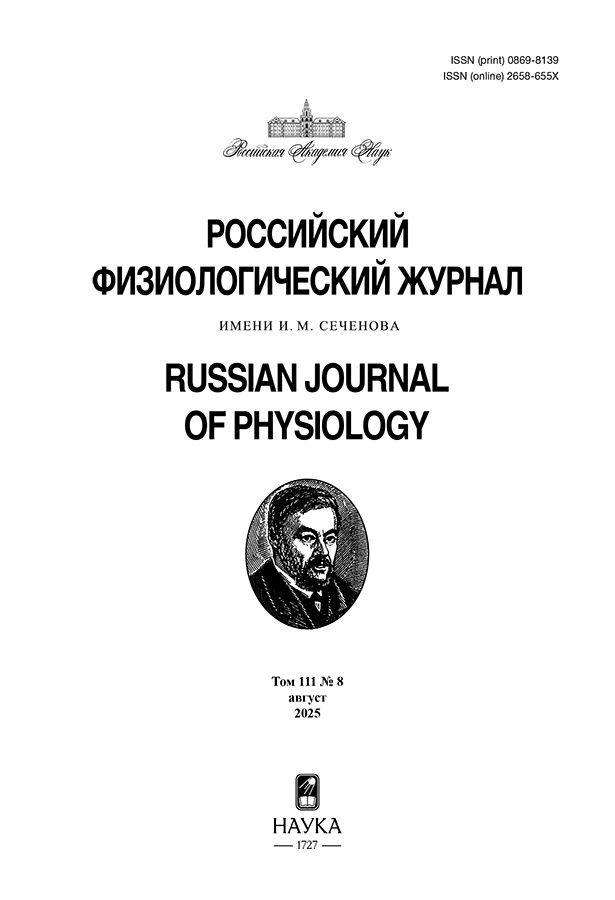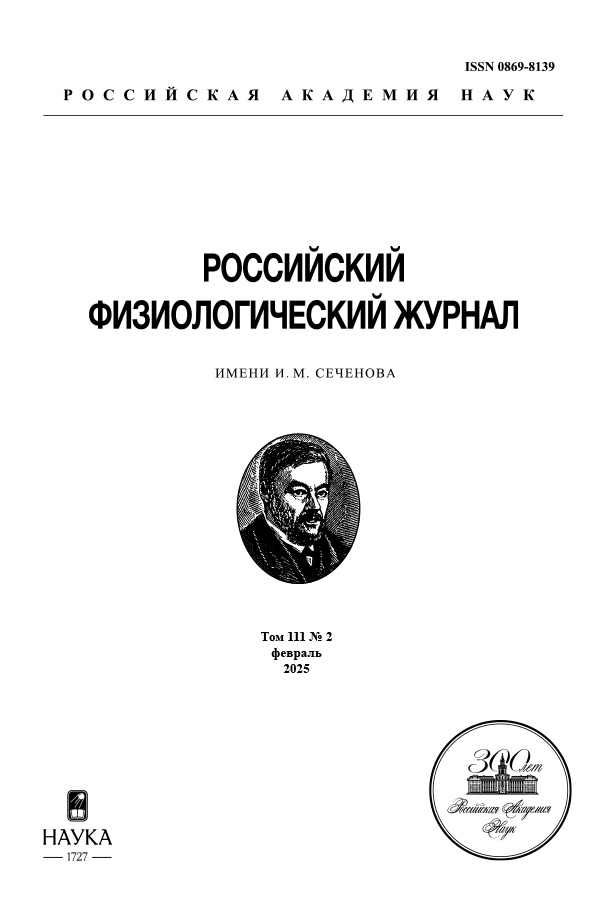Ex vivo модель тромбовоспаления у мышей с валидацией на модели рака молочной железы EMT-6
- Авторы: Коробкина Ю.Д.1, Мишуков А.А.1, Осидак Е.О.2, Свешникова А.Н.1,2
-
Учреждения:
- Центр теоретических проблем физико-химической фармакологии РАН
- Национальный медицинский исследовательский центр детской гематологии, онкологии и иммунологии им. Дмитрия Рогачева
- Выпуск: Том 111, № 2 (2025)
- Страницы: 266-277
- Раздел: ЭКСПЕРИМЕНТАЛЬНЫЕ СТАТЬИ
- URL: https://medjrf.com/0869-8139/article/view/679308
- DOI: https://doi.org/10.31857/S0869813925020057
- EDN: https://elibrary.ru/UIWBQP
- ID: 679308
Цитировать
Полный текст
Аннотация
Тромбовоспаление – это комплексное взаимодействие между системой гемостаза и иммунной системой, связанное с участием нейтрофилов в процессе тромбообразования. Дисбаланс взаимной активации тромбоцитов и нейтрофилов при различных патологиях приводит к тромбозам или кровотечениям. Ранее нами была разработана методика ex vivo наблюдения процесса тромбообразования и хемотаксиса нейтрофилов в плоскопараллельных проточных камерах, покрытых фибриллярным коллагеном. Целью данной работы была разработка методики ex vivo наблюдения процесса тромбовоспаления у мышей, позволяющая анализировать взаимодействие полиморфоядерных лейкоцитов (ПМЯЛ) с растущими тромбами. Для валидации методики использовалась модель рака молочной железы у мышей линии BALB/с (7 дней после ортотопической инокуляции культурой опухолевых клеток EMT-6). В образцах крови здоровых мышей на фибриллярным коллагене образовывались полноценные тромбы, однако ядерные клетки не наблюдались. Использование комбинации фибронектина и коллагена в качестве подложки позволило индуцировать тромбообразование и отслеживать движение и поведение ПМЯЛ в окрестности тромбов. При помощи разработанной модели показано, что при онкологии рост тромбов замедлен – относительный размер тромбов при раке молочной железы составляет 21 ± 11% от поля зрения по сравнению с 39 ± 10 % у здоровых мышей. При этом количество ПМЯЛ, адгезирующих к тромбам, и скорость их движения на подложке не отличаются у здоровых мышей и мышей с опухолями. Однако количество ПМЯЛ, покидающих тромб и сползающих на фибронектин-коллагеновый матрикс, значимо увеличено у мышей с опухолью (39 ± 23 против 15 ± 8 у здоровых контролей). Таким образом, с помощью разработанной модели тромбовоспаления показано, что уже на ранних этапах развития опухоли наблюдаются нарушения процесса тромбовоспаления.
Полный текст
Об авторах
Ю. Д. Д. Коробкина
Центр теоретических проблем физико-химической фармакологии РАН
Автор, ответственный за переписку.
Email: asve6nikova@yandex.ru
Россия, Москва
А. А. Мишуков
Центр теоретических проблем физико-химической фармакологии РАН
Email: asve6nikova@yandex.ru
Россия, Москва
Е. О. Осидак
Национальный медицинский исследовательский центр детской гематологии, онкологии и иммунологии им. Дмитрия Рогачева
Email: asve6nikova@yandex.ru
Россия, Москва
А. Н. Свешникова
Центр теоретических проблем физико-химической фармакологии РАН; Национальный медицинский исследовательский центр детской гематологии, онкологии и иммунологии им. Дмитрия Рогачева
Email: asve6nikova@yandex.ru
Россия, Москва; Москва
Список литературы
- Darbousset R, Mezouar S, Dignat-George F, Panicot-Dubois L, Dubois C (2014) Involvement of neutrophils in thrombus formation in living mice. Pathol Biol 62: 1–9. https://doi.org/10.1016/j.patbio.2013.11.002
- Italiano Jr JE, Battinelli EM (2009) Selective sorting of alpha-granule proteins. J Thromb Haemost 7: 173–176. https://doi.org/10.1111/j.1538-7836.2009.03387.x
- Parsons MEM, Szklanna PB, Guerrero JA, Wynne K, Dervin F, O’Connell K, Allen S, Egan K, Bennett C, McGuigan C, Gheveart C, Ní Áinle F, Maguire PB (2018) Platelet releasate proteome profiling reveals a core set of proteins with low variance between healthy adults. Proteomics 18: 1800219. https://doi.org/10.1002/pmic.201800219
- Sveshnikova AN, Adamanskaya EA, Panteleev MA (2024) Conditions for the implementation of the phenomenon of programmed death of neutrophils with the appearance of DNA extracellular traps during thrombus formation. Pediatr Hematol Immunopathol 23: 211–218. https://doi.org/10.24287/1726-1708-2024-23-1-211-218
- Schönichen C, Montague SJ, Brouns SLN, Burston JJ, Cosemans JMEM, Jurk K, Kehrel BE, Koenen RR, Ní Áinle F, O’Donnell VB, Soehnlein O, Watson SP, Kuijpers MJE, Heemskerk JWM, Nagy M (2023) Antagonistic roles of human platelet integrin αIIbβ3 and chemokines in regulating neutrophil activation and fate on arterial thrombi under flow. Arterioscler Thromb Vasc Biol 43: 1700–1712. https://doi.org/10.1161/ATVBAHA.122.318767
- Morozova DS, Martyanov AA, Obydennyi SI, Korobkin J-JD, Sokolov AV, Shamova EV, Gorudko IV, Khoreva AL, Shcherbina A, Panteleev MA, Sveshnikova AN (2022) Ex vivo observation of granulocyte activity during thrombus formation. BMC Biol 20: 32. https://doi.org/10.1186/s12915-022-01238-x
- Nechipurenko DY, Receveur N, Yakimenko AO, Shepelyuk TO, Yakusheva AA, Kerimov RR, Obydennyy SI, Eckly A, Léon C, Gachet C, Grishchuk EL, Ataullakhanov FI, Mangin PH, Panteleev MA (2019) Clot Contraction Drives the Translocation of Procoagulant Platelets to Thrombus Surface. Arterioscler Thromb Vasc Biol 39: 37–47. https://doi.org/10.1161/ATVBAHA.118.311390
- Schattner M, Jenne CN, Negrotto S, Ho-Tin-Noe B (2020) editorial: Platelets and immune responses during thromboinflammation. Front Immunol 11: 1079. https://doi.org/10.3389/fimmu.2020.01079
- Sveshnikova AN, Tesakov IP, Kuznetsova SA, Shamova ЕМ (2024) Role of platelet activation in the development and metastasis of solid tumors. J Evol Biochem Physiol 60: 211–227. https://doi.org/10.1134/S0022093024010150
- Sohal S, Thakur A, Zia A, Sous M, Trelles D (2020) Disseminated intravascular coagulation and malignancy: A case report and literature review. Case Rep Oncol Med 2020: 1–5. https://doi.org/10.1155/2020/9147105
- Li B, Lu Z, Yang Z, Zhang X, Wang M, Chu T, Wang P, Qi F, Anderson GJ, Jiang E, Song Z, Nie G, Li S (2023) Monitoring circulating platelet activity to predict cancer-associated thrombosis. Cell Rep Methods 3: 100513. https://doi.org/10.1016/j.crmeth.2023.100513
- De Meo ML, Spicer JD (2021) The role of neutrophil extracellular traps in cancer progression and metastasis. Semin Immunol 57: 101595. https://doi.org/10.1016/j.smim.2022.101595
- Kakumoto A (2024) Prognostic impact of tumor-associated neutrophils in breast cancer. Int J Clin Exp Pathol 17: 51–62. https://doi.org/10.62347/JQDQ1527
- Taucher E, Taucher V, Fink-Neuboeck N, Lindenmann J, Smolle-Juettner F-M (2021) role of tumor-associated neutrophils in the molecular carcinogenesis of the lung. Cancers 13: 5972. https://doi.org/10.3390/cancers13235972
- Jin L, Kim HS, Shi J (2021) Neutrophil in the pancreatic tumor microenvironment. Biomolecules 11: 1170. https://doi.org/10.3390/biom11081170
- Margaroli C, Cardenas MA, Jansen CS, Moon Reyes A, Hosseinzadeh F, Hong G, Zhang Y, Kissick H, Tirouvanziam R, Master VA (2020) The immunosuppressive phenotype of tumor-infiltrating neutrophils is associated with obesity in kidney cancer patients. OncoImmunology 9: 1747731. https://doi.org/10.1080/2162402X.2020.1747731
- Fridlender ZG, Sun J, Kim S, Kapoor V, Cheng G, Ling L, Worthen GS, Albelda SM (2009) Polarization of tumor-associated neutrophil phenotype by TGF-β: «N1» versus «N2» TAN. Cancer Cell 16: 183–194. https://doi.org/10.1016/j.ccr.2009.06.017
- Schaider H, Oka M, Bogenrieder T, Nesbit M, Satyamoorthy K, Berking C, Matsushima K, Herlyn M (2003) Differential response of primary and metastatic melanomas to neutrophils attracted by IL‐8. Int J Cancer 103: 335–343. https://doi.org/10.1002/ijc.10775
- Musiani P, Allione A, Modica A, Lollini PL, Giovarelli M, Cavallo F, Belardelli F, Forni G, Modesti A (1996) Role of neutrophils and lymphocytes in inhibition of a mouse mammary adenocarcinoma engineered to release IL-2, IL-4, IL-7, IL-10, IFN-alpha, IFN-gamma, and TNF-alpha. Lab Investig J Tech Methods Pathol 74: 146–157
- Martyanov AA, Morozova DS, Sorokina MA, Filkova AA, Fedorova DV, Uzueva SS, Suntsova EV, Novichkova GA, Zharkov PA, Panteleev MA, Sveshnikova AN (2020) Heterogeneity of integrin αIIbβ3 function in pediatric immune thrombocytopenia revealed by continuous flow cytometry analysis. Int J Mol Sci 21: 3035. https://doi.org/10.3390/ijms21093035
- Martyanov AA, Tesakov IP, Khachatryan LA, An OI, Boldova AE, Ignatova AA, Koltsova EM, Korobkin J-JD, Podoplelova NA, Svidelskaya GS, Yushkova E, Novichkova GA, Eble JA, Panteleev MA, Kalinin DV, Sveshnikova AN (2023) Platelet functional abnormalities in pediatric patients with kaposiform hemangioendothelioma/Kasabach-Merritt phenomenon. Blood Adv 7: 4936–4949. https://doi.org/10.1182/bloodadvances.2022009590
- Korobkin J-JD, Deordieva EA, Tesakov IP, Adamanskaya E-IA, Boldova AE, Boldyreva AA, Galkina SV, Lazutova DP, Martyanov AA, Pustovalov VA, Novichkova GA, Shcherbina A, Panteleev MA, Sveshnikova AN (2024) Dissecting thrombus-directed chemotaxis and random movement in neutrophil near-thrombus motion in flow chambers. BMC Biol 22: 115. https://doi.org/10.1186/s12915-024-01912-2
- Sagiv JY, Michaeli J, Assi S, Mishalian I, Kisos H, Levy L, Damti P, Lumbroso D, Polyansky L, Sionov RV, Ariel A, Hovav A-H, Henke E, Fridlender ZG, Granot Z (2015) Phenotypic diversity and plasticity in circulating neutrophil subpopulations in cancer. Cell Rep 10: 562–573. https://doi.org/10.1016/j.celrep.2014.12.039
- Tucker EI, Verbout NG, Leung PY, Hurst S, McCarty OJT, Gailani D, Gruber A (2012) Inhibition of factor XI activation attenuates inflammation and coagulopathy while improving the survival of mouse polymicrobial sepsis. Blood 119: 4762–4768. https://doi.org/10.1182/blood-2011-10-386185
- Jackson SP, Darbousset R, Schoenwaelder SM (2019) Thromboinflammation: challenges of therapeutically targeting coagulation and other host defense mechanisms. Blood 133: 906–918. https://doi.org/10.1182/blood-2018-11-882993
- Mishukov AA, Gaur S, Adamanskaya E-IA, Panteleev M, Sveshnikova AN (2024) Evaluation of platelet functional activity in healthy BALB/c mice and in EMT-6 breast cancer orthotopic model. J Evol Biochem Physiol 61.
- Tavera-Mendoza LE, Brown M (2017) A less invasive method for orthotopic injection of breast cancer cells into the mouse mammary gland. Lab Anim 51: 85–88. https://doi.org/10.1177/0023677216640706
- Pulikkot S, Hu L, Chen Y, Sun H, Fan Z (2022) Integrin regulators in neutrophils. Cells 11: 2025. https://doi.org/10.3390/cells11132025
- Ingham KC, Brew SA, Isaacs BS (1988) Interaction of fibronectin and its gelatin-binding domains with fluorescent-labeled chains of type I collagen. J Biol Chem 263: 4624–4628. https://doi.org/10.1016/S0021-9258(18)68828-3
- Ni H, Yuen PST, Papalia JM, Trevithick JE, Sakai T, Fässler R, Hynes RO, Wagner DD (2003) Plasma fibronectin promotes thrombus growth and stability in injured arterioles. Proc Natl Acad Sci U S A 100: 2415–2419. https://doi.org/10.1073/pnas.2628067100
- Everitt EA, Malik AB, Hendey B (1996) Fibronectin enhances the migration rate of human neutrophils in vitro. J Leukoc Biol 60: 199–206. https://doi.org/10.1002/jlb.60.2.199
- Boneschansker L, Jorgensen J, Ellett F, Briscoe DM, Irimia D (2018) Convergent and divergent migratory patterns of human neutrophils inside microfluidic mazes. Sci Rep 8: 1887. https://doi.org/10.1038/s41598-018-20060-6
- Trivanović D, Mojsilović S, Bogosavljević N, Jurišić V, Jauković A (2024) Revealing profile of cancer-educated platelets and their factors to foster immunotherapy development. Transl Oncol 40: 101871. https://doi.org/10.1016/j.tranon.2023.101871
- Kawano T, Hisada Y, Grover SP, Schug WJ, Paul DS, Bergmeier W, Mackman N (2023) Decreased platelet reactivity and function in a mouse model of human pancreatic cancer. Thromb Haemost 123: 501–509. https://doi.org/10.1055/s-0043-1761419
- Biermann H, Pietz B, Dreier R, Schmid KW, Sorg C, Sunderkötter C (1999) Murine leukocytes with ring-shaped nuclei include granulocytes, monocytes, and their precursors. J Leukoc Biol 65: 217–231. https://doi.org/10.1002/jlb.65.2.217
- Gruijs M, Sewnath CAN, Van Egmond M (2021) Therapeutic exploitation of neutrophils to fight cancer. Semin Immunol 57: 101581. https://doi.org/10.1016/j.smim.2021.101581
- Brewer G (2023) Activated neutrophils: the anti-hero. Nat Rev Cancer 23: 190. https://doi.org/10.1038/s41568-023-00555-9
Дополнительные файлы














